Join More Than 50,000+ Subscribers and get latest camera news and rumors
NEW CAMERA VIDEOS ON YOUTUBE
|
By admin, on May 30th, 2025
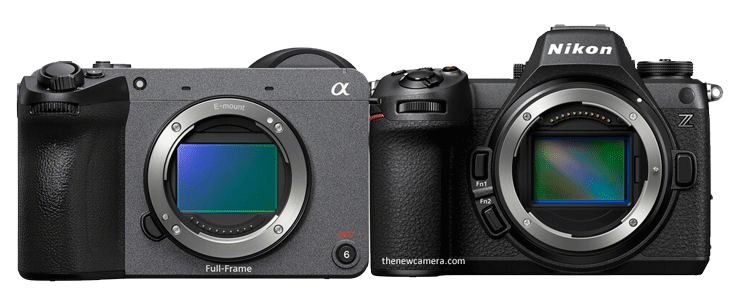
Sony FX2 versus the Nikon Z6 Mark III camera, let’s explore the differences between the two point by point
The Nikon Z6 Mark III camera is slightly larger, with a photography-friendly body and controls. The Sony FX2 does have a deep hand grip, but it has a somewhat boxy design. The thing that makes a big difference between the two, specifically in the design part, is that Sony is made for cinematography purposes and carries a lot of tripod threads all over the body to mount it perfectly in cinema rigs. The other advantage we have with the Sony FX2 camera is the moving viewfinder.
Nikon Z6 III and the Sony FX2 — both of them support dual card slots, one dedicated for CFexpress and one SD card slot. The Nikon Z6 Mark III monitor is slightly larger and of higher resolution, so users may experience better LCD quality with the Z6 Mark III camera. At the very same time, the electronic viewfinder is also a 5.76 million-dot unit compared to a 3.6 million-dot electronic viewfinder in Sony, but yeah, we are getting better display units in the Nikon Z6 Mark III.
The wireless functionality of the two is almost the same, but Nikon does have GPS support via smartphone to enable geotagging functionality for travel purposes, documentary work, or maybe for photojournalism purposes. The FX Mark 2 camera misses out. Although the humidity tolerance and the weatherproof criteria of both cameras match each other, so we literally do have almost the same build quality in both cameras.
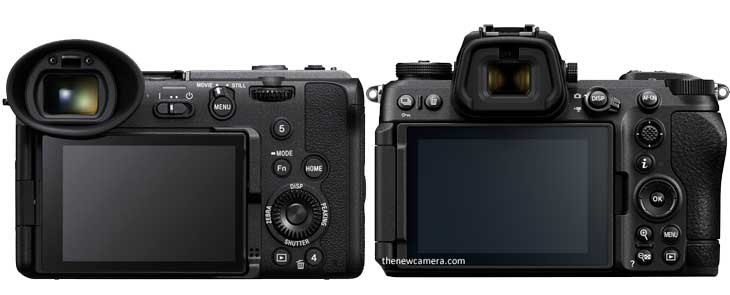
Design Comparison
| Feature |
Sony FX2 |
Nikon Z6 III |
| Lens Mount |
Sony E |
Nikon Z |
| Material of Construction |
Magnesium Alloy |
Magnesium Alloy |
| Dimensions (W x H x D) |
5.1 x 4.1 x 3.1″ / 129.7 x 103.7 x 77.8 mm |
5.5 x 4 x 2.9″ / 138.5 x 101.5 x 74 mm |
| Weight |
1.3 lb / 594 g (Body Only), 1.5 lb / 679 g (With Battery, Recording Media) |
23.6 oz / 670 g (Body Only) |
| Shoe Mount |
1x Intelligent Hot Shoe |
1x Hot Shoe |
| Tripod Mounting Thread |
2x 1/4″-20 Female (Bottom) |
1x 1/4″-20 Female (Bottom) |
| Accessory Mounting Thread |
3x 1/4″-20 on Camera Body |
Not specified |
| Operating Conditions |
32 to 104°F / 0 to 40°C |
32 to 104°F / 0 to 40°C up to 85% Humidity |
| Media/Memory Card Slot |
Slot 1: CFexpress Type A / SD (UHS-II)
Slot 2: SD/SDHC/SDXC (UHS-II) |
Slot 1: CFexpress Type B / XQD
Slot 2: SD/SDHC/SDXC (UHS-II) |
| Wireless |
2.4 GHz Bluetooth 5.0, 2.4 / 5 GHz Wi-Fi (802.11a/b/g/n/ac) |
2.4 / 5 GHz Wi-Fi 5 (802.11ac), Bluetooth 5.0 |
| Mobile App Compatible |
Yes: Android & iOS (Sony |
Creators’ App |
| Global Positioning |
No |
GPS (via Connected Smartphone) |
| Monitor |
3″ Tilting Touchscreen LCD, 1,036,800 Dot |
3.2″ Articulating Touchscreen LCD, 2,100,000 Dot |
| Viewfinder |
Electronic (OLED), 3,686,400 Dot / Titling EVF |
Electronic, 5,760,000 Dot, 0.5″ |
Best Camera for Photographers
Sony FX2 camera offers higher resolution at 33 megapixels, but at the very same time, the Nikon Z6 Mark 3 camera offers 24.5 megapixel resolution, which is of course limited. But if you talk about sensor architecture, then the Nikon Z6 Mark 3 camera is using a partially stacked CMOS sensor.
Video Recording: Nikon Z6 III Excels
Of course, the Sony FX2 camera is able to create highly detailed 4K 30fps footage from a 7K oversampled file. At the very same time, when you are recording videos at 4K 60 frames per second or 4K 120 frames per second with the Nikon Z6 Mark 3 camera—and of course, to be noted—4K 120 FPS is not possible with the Sony FX2 despite being in a higher price range. Other than that, even when you are trying to record 4K @ 60 frames per second, at that time you have to face a 1.5x crop in the Sony FX2. So with the FX2, we have limitations attached in the higher frame rate, and 4K 120 is not possible.
Continuous Shooting Speed Comparison
The same advantage we also get in the continuous shooting speed of the camera, where we are able to get up to 20 FPS RAW, and up to 60 frames per second in full resolution, and up to 120 frames per second in the DX crop mode. Thankfully, the Sony FX2 camera is using a mechanical shutter, but despite that, the continuous shooting speed of the camera remains limited to 11 frames per second.
Autofocus: Sony FX2’s Precision
When you dive into autofocus performance, each system really brings something different to the table. Sony’s FX2 boasts a whopping 759 phase-detection points (compared with Nikon’s 299 “hybrid” points), which means it can lock onto—and keep track of—moving subjects across with Sony’s famous AI AF. That’s a huge advantage when you’re shooting fast-paced street scenes or busy event coverage.
Nikon Z6 III’s Low-Light Autofocus
On the other hand, Nikon’s autofocus shines in low-light situations. With a sensitivity down to –10 EV (versus Sony’s 4 EV), the Z6 III can find and focus on subjects in near-darkness—perfect for late-night cityscapes, dimly lit weddings, or cozy indoor gatherings.
Autofocus Tracking: Nikon Closing the Gap
Recent reviews peg the Z6 III’s subject recognition and tracking as nearly on par with Sony’s vaunted system, so you’re not really “giving up” much by choosing Nikon—especially if you need that extra push in challenging light. Still, many pros continue to call Sony the gold standard for sheer reliability, so it really comes down to what kind of shooting you do most often.
Image Stabilization: Nikon’s Edge
Sensor-shift image stabilization of the Nikon Z6 Mark 3 is more helpful, since you can link your autofocus point with the VR system of the camera, and you will be getting a true 7.5 stops of stabilization all the time, even if you are focusing in the corner of the frame. Sony’s Active Image Stabilization is highly effective in video mode, but when you are talking about stills, it’s the traditional-style IBIS system we are getting.
Why Choose Nikon Z6 III for Pros
Nikon Z6 Mark III camera, due to its partially stacked CMOS sensor and Expeed 7 image processor, the autofocus calculation is being done at the rate of 120 frames per second in-camera. So the autofocus and the auto exposure refresh rate is actually 120 FPS. And due to the introduction of a new artificially intelligent autofocus algorithm inside the camera, the overall photographic experience is now elevated to the next level.
So if you are a professional photographer, then the Nikon Z6 Mark 3 will be a perfect choice for your requirements.
Photographic Features Compared
| Feature |
Sony FX2 |
Nikon Z6 III |
| Sensor Resolution |
Actual: 34.1 MP, Effective: 33 MP |
Actual: 26.79 MP, Effective: 24.5 MP (6048 x 4032) |
| Image Sensor |
35.9 x 23.9 mm (Full-Frame) CMOS |
35.9 x 23.9 mm (Full-Frame) Partially Stacked CMOS |
| Image Stabilization |
Sensor-Shift, 5-Axis, Active IS |
Sensor-Shift, 5-Axis, AF points can be linked to VR |
| ISO Sensitivity |
Native 100-51,200 (50-204,800 Extended) |
Photo: Native 100-64,000 (50-204,800 Extended) |
| Shutter Type |
Mechanical Focal Plane and Electronic Rolling Shutter |
Mechanical Focal Plane and Electronic Rolling Shutter |
| Shutter Speed |
1/8000 to 30 Seconds (Photo) |
1/8000 to 15 Minutes (Mechanical), 1/16000 to 15 Minutes (Electronic) |
| Continuous Shooting |
Not specified in the provided data (10 fps per web sources) |
Up to 20 fps at Maximum Resolution |
| Autofocus Points |
Photo: Phase Detection: 759 |
Photo, Video: Contrast Detection, Phase Detection: 299 |
| Autofocus Sensitivity |
4 to +20 EV |
-10 to +18 EV |
| White Balance |
2500 to 9900K |
2500 to 10,000K, Presets: Auto, Cloudy, Color Temperature, Direct Sunlight, Flash, Fluorescent, Incandescent, Shade |
| Image File Format |
Not specified (JPEG, Raw per web sources) |
HEIF, JPEG, Raw |
| Bit Depth |
Not specified (14-bit per web sources) |
14-Bit |
Best Camera for Video
When it comes to video, the Z6 III feels like a powerhouse that’s ready to stretch your creativity. Imagine being able to capture in gorgeous ProRes RAW—right inside the camera—at up to 6K/60p. With the help of the stacked CMOS sensor, the camera can record 6K 60fps videos. Despite being a consumer hybrid mirrorless camera, the Nikon Z6 Mark III is able to deliver 6K resolution, that is really a big surprise.
That means you’ve got room to push and pull your colors, tweak contrast, and hold onto every bit of shadow and highlight detail without worrying about external recorders or cables.
Nikon Z6 Mark III Slow-Motion Capabilities
And if you need silky-smooth slow-mo or a little extra resolution, you can jump into uncropped 4K/120p or even 1080p/240p modes. While shooting 4K 120 frames per second, you have to face a 1.5x DX crop, and when you are shooting 4K @ 60 frames per second, there is a negligible amount of crop, which remains unnoticeable.
Sony FX2 Video Features
Sony’s FX2 isn’t slouching, though. It delivers clean, 10-bit H.264/H.265 internally and will give you oversampled 4K/30p for sharp, detailed footage. If you really need that ProRes RAW goodness, you can use an external recorder via HDMI—but that means more gear hanging off your rig. And when you want to push the frame rate higher in 4K—meaning if you want to record your 4K videos at 60 frames per second—you have to face a 1.5x crop, and there is no 120 frames per second option available in the Sony FX2 while recording 4K videos.
Sony FX2 Live-Streaming Advantages
Where Sony shines is in its live-streaming chops: built-in RTMP/RTMPS and SRT support make it a dream camera for one-person streaming setups, whereas the Z6 III leaves you hunting for a separate encoder. Both cameras give you flexible picture profiles—N-Log on Nikon holds up beautifully alongside Sony’s S-Log 3 and S-Cinetone—but in professional circles, S-Log and Cinetone have built a bit more of a buzz.
Audio and Rolling Shutter Comparison
Don’t forget audio: both record in 24-bit LPCM, but Sony’s extra channels give you more mics or ambient tracks to play with. And if rolling shutter is a worry, Nikon’s stacked sensor really pulls ahead—its readout is faster, so you’ll see far less “jello” when you whip the camera side-to-side at 4K/60p or 120p.
Nikon Z6 III vs. Sony FX2: Which to Choose?
In short, if you’re a solo shooter who loves to color-grade, chase cinematic slow-mo, and keep your rig light, the Z6 III’s internal RAW and high-speed modes deliver. If you’re streaming live, mixing multiple audio sources, or don’t mind an external recorder for 16-bit RAW, the FX2’s built-in streaming and flexible codecs have you covered.
Video Comparison
| Feature |
Sony FX2 |
Nikon Z6 III |
| RAW |
16 BIT via HDMI |
12 Bit internally |
| MAX RES. |
4K 60p |
6K 60p N-RAW, 6K 30p ProRes RAW |
| Internal Recording Modes |
H.264/H.265 8/10-Bit:
UHD 4K (3840 x 2160) at 23.98/25/29.97/50/59.94 fps
DCI 4K (4096 x 2160) at 23.98/24/25/29.97/50/59.94 fps
|
ProRes RAW/ProRes RAW HQ/Raw: 6048 x 3404 at 23.98/25/29.97/50/59.94 fps
4032 x 2268 at 23.98/25/29.97/50/59.94 fps 3984 x 2240 at 23.98/25/29.97/50/59.94/100/120 fps
UHD 4K (3840 x 2160) at 23.98/25/29.97/50/59.94/100/120 fps
|
| Format and codes |
16 Bit RAW, 10-Bit 4:2:2 XAVC S-I |
12 Bit RAW, |
| 4k 60 FPS |
Yes, 1.5X Crop |
Yes, No crop at 4k 60FPS |
| 4K 120 FPS |
No |
Yes, 1.5X Crop |
| External Recording Modes |
4:2:2 8/10-Bit via HDMI:
DCI 4K (4096 x 2160)
UHD 4K (3840 x 2160)
HD (1920 x 1080)
Raw 16-Bit: 4672 x 2628 |
HDMI: UHD 4K (3840 x 2160) |
Dual Native ISO
|
Dual Base 800/4000 |
Dual Native ISO 800 |
| Built-in Fan |
Yes |
No |
| Video IS |
Very effective / Active IS + Gyro |
Mechanical IBIS + EVR |
| Fast-/Slow-Motion Support |
Yes |
Slow-Motion Only |
| Gamma Curve |
HDR-HLG, Rec709, S Cinetone, Sony S-Log 3, Standard |
HDR-HLG, Nikon N-Log |
| Anomorphic Lenses support |
Yes |
No |
| Audio Recording |
2/4-Channel 24-Bit 48 kHz LPCM
2-Channel 16-Bit 48 kHz LPCM |
16-Bit 48 kHz AAC Audio
2-Channel 24-Bit 48 kHz LPCM Audio |
| IP Streaming |
RTMP, RTMPS, SRT: 1280 x 720 to 3840 x 2160 at 25p, 29.97p, 50p, 59.94p |
No |
Buy Nikon Z6 Mark III from Amazon.com | B&H Camera store
Buy Sony FX2 From B&H Store
also see
Which one is the Best Camera for Recording Video – Panasonic Lumix S1 II vs. Nikon Z6 III?
Best Lenses for Nikon Z6 III
By admin, on April 15th, 2025
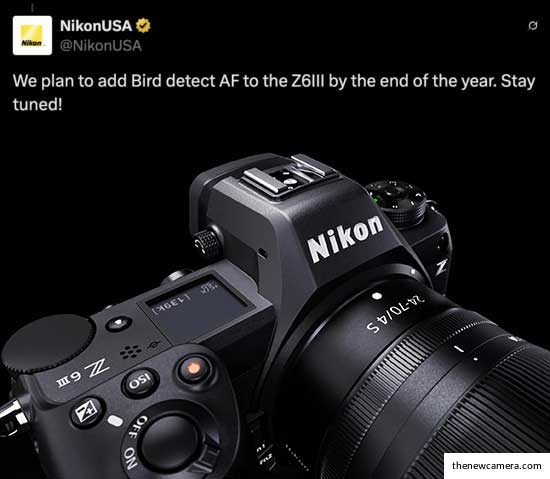
Today Nikon confirmed that bird eye autofocus mode is coming to the Nikon Z6 Mark III camera later this year in their social media post, that’s really great news since cameras like Nikon Z50 II, Z5II and Nikon Zf, which come at a lower price point than the Nikon Z6 III, now have bird eye autofocus mode. And Z6 III users are waiting for a long time to have it.
And we had reported back in November 2024 that Nikon is working on Z6 Mark 3 bird eye autofocus mode and they will roll it out as they are ready for it, and now we got the final confirmation from Nikon itself.
Best Lenses for Nikon Z6 III
Follow us on our social pages FACEBOOK | TWITTER | INSTAGRAMto get live Camera News +Nikon Rumors 24X7
By admin, on February 27th, 2025
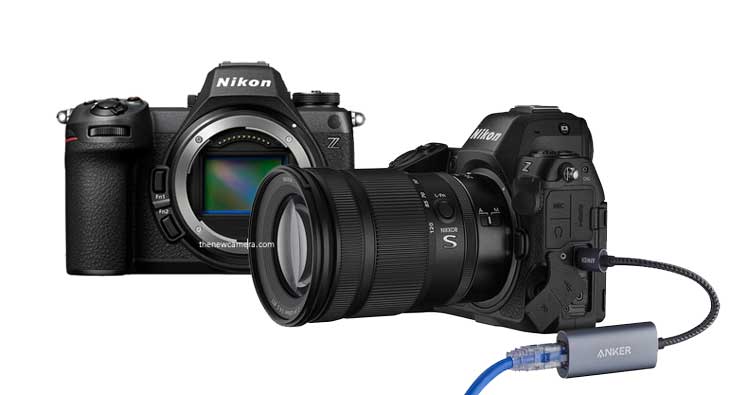
Due to the growing pressure of Panasonic’s recent camera announcement, models like S5, S5IIX, and S1R II intensifying the market competition with built-in professional video graphics features like an anamorphic de-squeeze setter, angle waveform, and a lot of features that professionals in videography would love to have in their cameras. But again, they also have some limitations, like the first generation of hybrid autofocus system, which is not as good as the other brands. But, the recent set of feature upgrades announced by Nikon for the Nikon Z6 III and Z8, give us a clear hint that Nikon is consdering Lumix as their main competitor, and upscaling their camera features o match or surpass Panasonic’s advanced videography capabilities, catering to both professional filmmakers and hybrid shooters.
Nikon’s Interest in Cinematography
We all know that Nikon is now more interested in cinematography since it acquired the RED camera division. It is a bit more serious about filmmaking and enhancing videography for cinematographic features in its consumer professional mirrorless cameras.
Nikon’s Recent Firmware Update
In addition to that, in a recent firmware update, Nikon has updated the N-Log of the Z6III, reducing noise in the dark areas of N-Log videos. They have mentioned this in the recent update, so it’s a kind of major update that UPSCALES the N-Log video recording of the Z6III camera.
Shutter Angle and New Features in Nikon Z6III & Z8
Apart from this major update, 15 steps of shutter angle from 5.6 degrees to 360 degrees have been added in the Z6III and Nikon Z8 cameras.
Apart from these two major updates, a lot of various custom control settings have been added, like selecting the color of the zebra pattern that includes black, grey, red, green, blue, etc. A waveform monitor—which was not available in the previous generation of their cameras—has also been added.
At the same time, high-resolution lossless zoom has also been added. If you are creating your videos and experimenting with your FX camera, then the digital high-resolution lossless zoom feature is available to you.
Download the latest Nikon Z6 III firmware update
Download the latest Nikon Z8 Firmware update
Follow us on our social pages FACEBOOK | TWITTER | INSTAGRAM to get live Camera News + Nikon Rumors 24X7
By admin, on November 11th, 2024
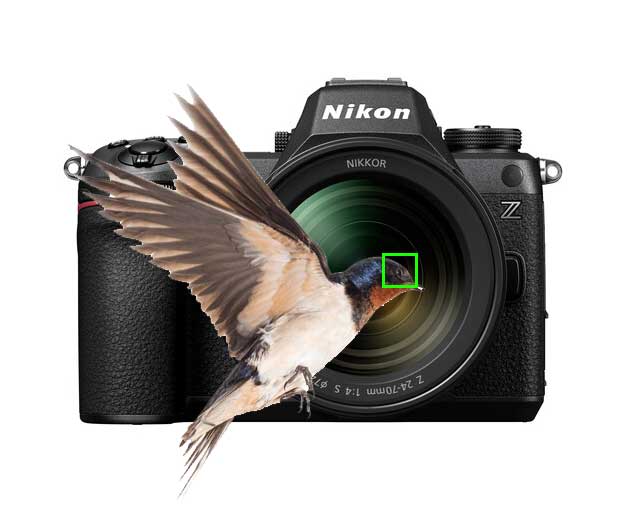
So in the latest update, we have that Nikon is currently working on the implementation of bird eye autofocus mode in the Nikon Z6 Mark III camera since the camera doesn’t have that particular mode, and many wildlife photographers are disappointed with this.
They have become more disappointed after the release of the Nikon Z50 II, which does have a birds-eye autofocus mode under the $1000 price range.
But not to worry, since, as per the latest information coming out from @Jan Wegener’s YT Channel, Nikon Japan is listening to us, and very soon in upcoming firmware updates, they will add the bird eye AF feature in the Z6 III camera.
Best Lenses for Nikon Z6 III
Follow us on our social pages FACEBOOK | TWITTER | INSTAGRAM to get live Camera News
By admin, on July 24th, 2024
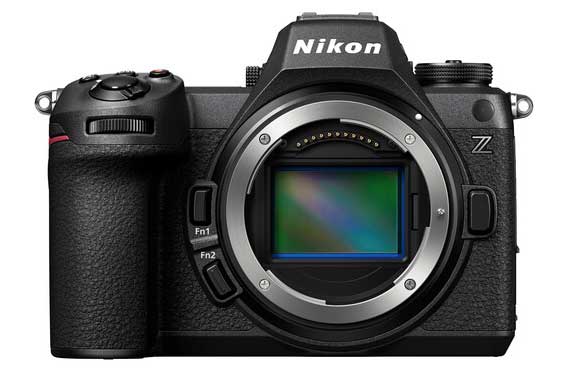
Nikon’s president, in an interview, confirmed that they will focus more on the video quality of their upcoming products. Thanks to RED Corporation, the quality of professional cinema cameras will be brought down to Nikon consumer-level cameras. Who knows, shortly, Nikon may also announce a new range of cameras that will feature both RED and Nikon branding.
Take a look at he said
Nikon President Yoshiaki Tokunari said in an interview that “video performance is required in recent years” regarding the company’s main camera business, and expressed his intention to expand market share by incorporating video technology from a US movie camera company that Nikon acquired this spring. Regarding recent sales trends, he said, “We are seeing signs of recovery in interchangeable lens cameras.” By region, he explained, “China has grown to the same level as Europe, and the growth rate is large in emerging countries such as South Asia.” Semiconductor exposure equipment, which Nikon and Canon handle, is an industrial machine that burns circuits onto silicon plates. Plans for new semiconductor factory construction across the country are a tailwind, and Tokunari expressed his enthusiasm for expanding sales, saying, “There are business opportunities.
This is very good news, as Nikon is now open to many new possibilities. They already have an open mount, allowing for a wide range of lenses, and now they are focusing more on improving the video capabilities of their consumer-level cameras. Last year, they saw a 1.5% growth in overall operating profit, and experts predict they will achieve at least 1.5% to 2% growth in the future.
Follow us on our social pages FACEBOOK | TWITTER | INSTAGRAM to get live Camera News + Nikon Rumors 24X7.
source – nr.com
By admin, on July 16th, 2024

Let’s talk about the best camera and lenses for the recently announced Nikon Z6 Mark III camera, we have selected some of the best lenses available for the Nikon Z6 Mark III camera from the Native Nikon Z Mount as well as from Tamron and Sigma. Now, let’s enjoy the list, and don’t forget about the cup of coffee we need for writing the next article
What are the Best lenses for Nikon Z6 III in 2024?
Best lenses for Nikon Z6 III Camera start now, I have selected some of the best lenses for the Nikon Z8 camera for wedding photography, cinematography, Best lenses for wildlife and sports as well as Nikon Z6 III best lenses for shooting content.
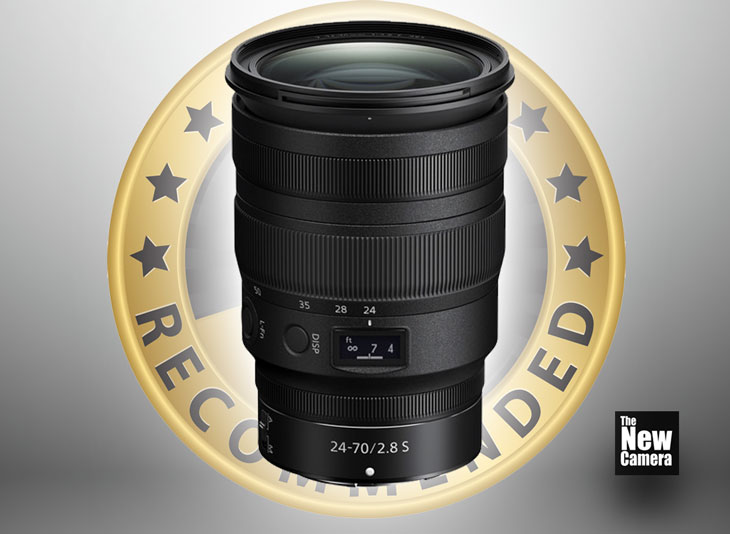
Get Nikon Z 24-70mm F2.8 Lens from Amaznon.com | B&H Store
1. Nikon 24-70 mm F2.8
Nikon 24-70 mm F2.8 – The best allrounder lens for the Nikon Z6 III camera is the Nikon 24-70mm f/2.8 S. The first recommendation is the Nikon 24-70mm f/2.8 S. This lens features a constant f/2.8 aperture throughout the zoom range and delivers amazingly sharp output throughout the focal range with creamy bokeh, one of the most sharp and versatile lenses present to date, this lens will cover your 99% requirements.
If you are a wedding photographer and cinematographer, or a travel shooter, street and fashion portrait photographer, this versatile lens is highly recommended, once you have this lens on your camera you won’t need any other lens. The biggest reason for recommending this lens is that you can shoot almost anything with it, from wide-angle landscapes to longer focal-length portraits. This is one of the most versatile and sharpest lenses Nikon has ever made for full-frame cameras.
Nikon 24-70mm F2.8 user Review
Build Quality (5/5): The moment you pick up the NIKKOR Z 24-70mm f/2.8 S, you can feel the build quality and attention to detail. It’s robust, weather-sealed, and exudes a sense of durability. The lens mount is solid, and it pairs perfectly with Z series cameras.
Image Quality (5/5): This lens produces incredibly sharp and detailed images throughout the zoom range. The f/2.8 aperture is perfect for low-light situations, and the nine-blade aperture diaphragm creates beautiful, creamy bokeh. It’s versatile, whether you’re shooting landscapes, portraits, or events.
Autofocus (4.5/5): The autofocus system is lightning fast and remarkably accurate. It’s perfect for capturing fast-moving subjects or achieving precise focus in challenging conditions. The stepper motor ensures quiet and smooth focus transitions, making it an ideal choice for videographers as well.
Versatility (5/5): The 24-70mm focal length range is incredibly versatile and covers most photography situations. It’s a lens you can trust whether you’re shooting wide-angle landscapes, tight portraits, or anything in between. The lens is also relatively compact and lightweight, which makes it perfect for all-day shooting.
Handling (5/5): The ergonomic design of this lens is a joy to work with. The customizable control ring is a great addition, allowing you to adjust settings like aperture, ISO, or exposure compensation quickly. The zoom and focus rings are smooth, and the overall balance feels perfect in your hand.
Price (4/5): While this lens is an investment, its quality and performance justify the cost. It’s worth noting that you get what you pay for, and the NIKKOR Z 24-70mm f/2.8 S is a premium piece of glass that will serve you well for years to come.
Chromatic aberration is also very well-controlled. We didn’t find it to be an issue, and frankly such purple and green fringing in front of, and behind, the focus plane wasn’t an issue. The autofocus performance is also top-notch. The lens uses 2 AF drive units synchronized to deliver speedy and accurate AF results – even when you are using your camera at 120 frames per second or when you are using it at 20 frames per second. This lens is bound to give perfect results when paired with ZF or Z6 III.
Conclusion – Highly Recommended if budget allows
| What we like |
What we don’t |
- Very lightweight and quite compact for its class
- Comprehensive weather-sealing
- Very sharp and free of most offensive optical defects
- Decent macro performance
- Handy multi-function OLED display
- Works well for video too
|
|
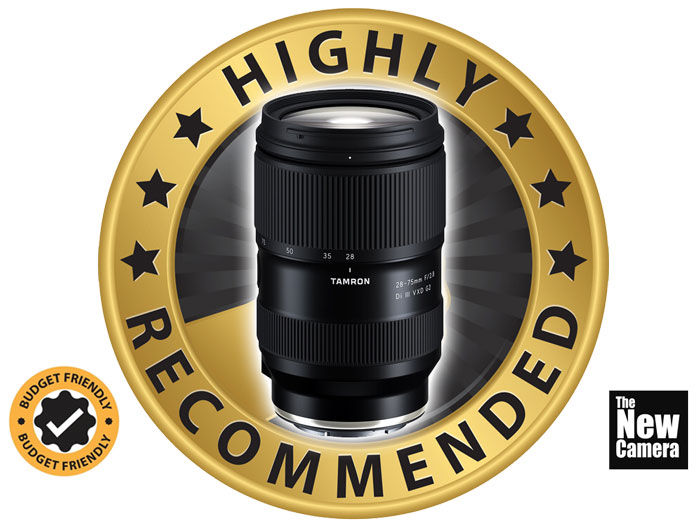
get the Nikon 28-75mm F2.8 lens from Amazon.com | B&H Store
2. Tamron 28-75mm F2.8 (Budget Alternative)
The Tamron 28-75mm F2.8 lens is one of the best budget alternatives to the more expensive 24-70mm F2.8 lens. Users of the Tamron 28-75mm F2.8 appreciate its balanced features, including a constant F2.8 aperture throughout the zoom range. The optical performance of this lens is also excellent. It is designed for Nikon cameras to extract the maximum possible quality from a given scene
What users say
This is a great lens. Great for photos. Im use mine with my new Z8. What a great pair. Super light and f2/8. Will be using it in the fall for basketball.
The lens features a hybrid stepping drive autofocus motor, making it perfectly suitable for both still and video photography. The best part of this lens is its internal focus design, which allows you to capture your subjects even in adverse weather conditions, thanks to its advanced weather sealing.
If you are a wedding photographer or cinematographer and are unable to afford the Nikon 24-70mm F2.8 lens due to budget constraints, then the next lens you should consider is the Tamron 28-75mm F2.8. This lens is an excellent value for your money and is highly recommended for wedding, travel, fashion, and portrait photography.
Conclusion: Highly recommended
| What we like |
What we don’t |
- Best Pro Budget Lens for Nikon
- Comprehensive weather-sealing
- Very Sharp at the center
- Excellent macro performance
- Works well for video too
|
- Less coverage at the wider end compared to 24-70mm F2.8
|
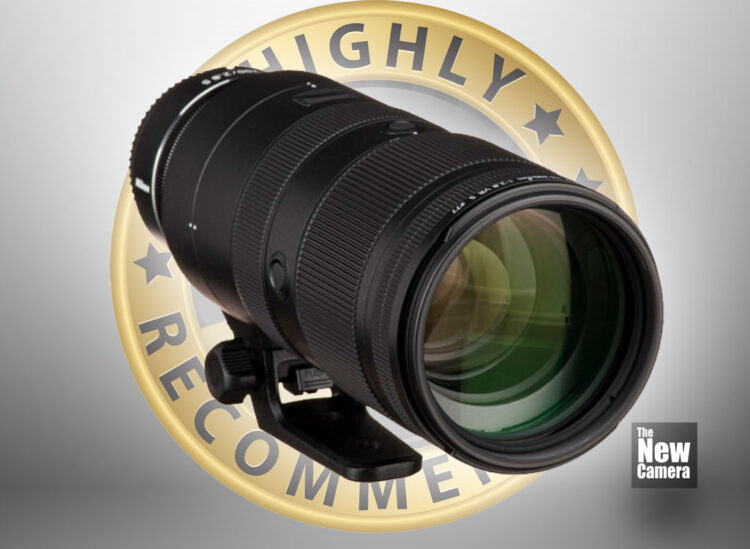
Get this Lens 70-200mm F2.8 lens from Amazon.com | B&H Store
3. Nikon 70-200mm F2.8
The Nikon 70-200mm f2.8s lens produces incredibly sharp pictures and extracts the maximum amount of detail in your images. It is one of the best lenses to pair up with your Nikon Z6 III camera. Practically no color fringing or chromatic aberration is visible in this lens. The lens is distortion-free and lens vignetting is also very minimal and can be easily corrected in post-processing.
Should you buy this lens?
If you are a wedding photographer who wants to capture life-size portraits of your clients in a cinematic style, or if you want to capture distant candid images in a unique fashion, then this lens could be a good choice for you. Additionally, if you are into sports and wildlife photography, this lens is a must-have in your arsenal. However, the final decision should be based on your specific needs and budget. It’s always a good idea to research and compare different lenses before making a purchase.
The build quality of this lens is superb and made up of a metal body covered with rubberized material. It is extensively weather-sealed and able to deliver quality equal to its price tag. The LCD screen of the lens is not that much usable since we don’t have the habit of looking at the lens LCD. Maybe that’s one of the reasons I find the display not that much usable for me. Overall, the lens is worth every penny.
Finally, let’s talk about autofocusing performance. When paired up with a Nikon Z8 or Nikon Z9 camera which uses deep learning algorithms, the lens’s autofocusing system will improve with time. At the same time, the Z8 is capable of doing 120 AF calculations per second and supports burst speed up to 120 frames, and your lens is fully capable of synchronizing the AF performance even when shooting at max burst speed.
What our users say
As expected, this is a superb performing, ultra-sharp lens. It is built to professional standards, with a solid feel internal zoom, and smooth rotating tripod collar. The only reason I will cut a few marks is somewhat hefty weight. It is almost as heavy (within a few ounces) as the F-mount SLR equivalent, which would be another reason to consider the lighter 70-180. Sony and Canon both made their mirrorless 70-200 f2.8 lenses significantly lighter than the SLR equivalents, so why can’t Nikon do the same?
The image stabilization of this lens is highly reliable and you can shoot amazing pics handheld without any noticeable blur even at very slow shutter speeds when shooting at 200mm.
Although the price of this lens is approximately $2600, the worst thing about this lens since it costs even more than the Nikon Z6 III camera.
Conclusion
| What we like |
What we don’t |
- Excellent optics
- Hybrid AF Motor
- Almost free from all lens distortion
- Weather sealed
- Works well for video too
|
- Heavy, always need tripod/monopod for shoot
- Price
|
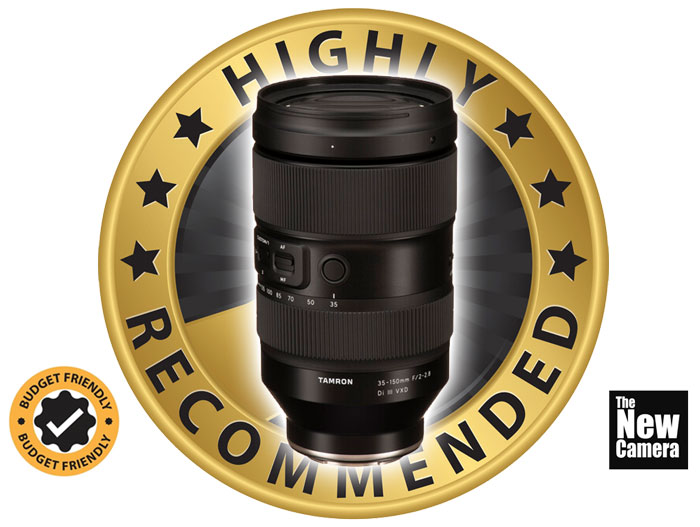
Get Tamron 70-180mm F2.8 lens from Amazon.com | B&H Store
4. Tamron 70-180mm F2.8 VXD (Budget Alternative)
Let’s discuss the best budget alternative to the 70-200mm F2.8 VR lens. The Tamron 70-180mm F2.8 VXD lens is a great option. If your budget allows, then without a doubt, you should buy the Nikon 70-200mm F2.8 lens. However, if your budget doesn’t permit and you wish to have output similar to the 70-200mm lens, then you should consider buying the Tamron 70-180mm F2.8 lens. It’s always important to choose a lens that fits your specific needs and budget.
What professionals say about this lens
Added this for events rather than 70-200 when shooting all day. Excellent results. I wanted to trim my kit in weight so this was a no-brainer. The tiny differences in IQ are not noticeable unless you’re a pixel peeper at 200%. The fact that it doesn’t float my image after each shot is a HUGE bonus.
Conclusion
| What we like |
What we don’t |
- Excellent optics
- Hybrid STM AF Motor
- Lightweight design for event shoot
- Weather sealed
- Works well for video too
|
|
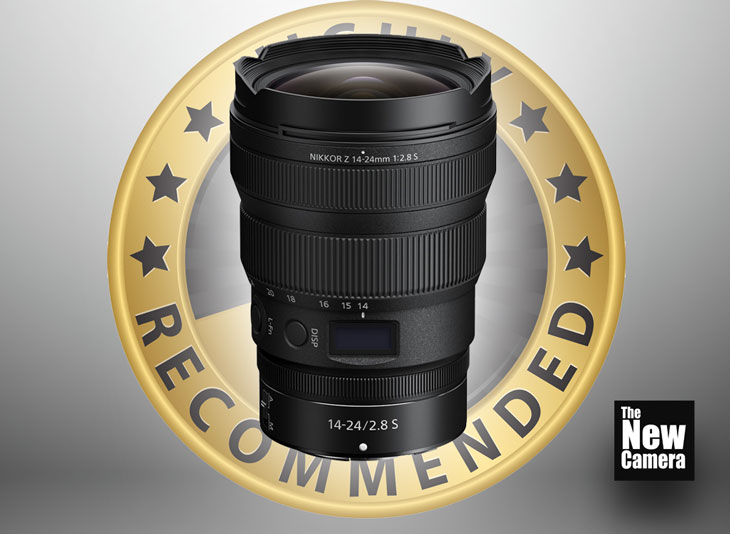
Get Nikon 14-24mm F2.8 Lens from Amazon.com | B&H Store
5. Nikon 14-24mm F2.8 – Best Ultra Wide Zoom
The 14 to 24 mm f/2.8 lens is the best lens for landscape and architecture photography, as well as for advanced cinematographers and content creators.
Usage of the Lens ?: If you are a pro content creator and mostly you create daily lifestyle vlogs then for sure this one is a must-have lens for you, the other most applicable regions for this lens are indoor/outdoor architecture photography and corporate videos. This lens is also very usable for landscape shooters.
The 14 to 24 mm lens in Nikon is a part of a holy trinity lens which includes the 24 to 70 mm f/2.8 and the 70 to 200 mm f/2.8. This lens is the sharpest wide-angle zoom lens at this focal length in Nikon’s lineup, The image quality of this lens is super impressive even at 14 mm wide, and covers approximately 115 degrees of view.
So if your budget allows and you want to have an ultra-wide zoom lens, then you should go with this. The only issue that I have faced with this lens is finding its proper filters since it has a very large thread of 112 mm.
Conclusion
| What we like |
What we don’t |
- Excellent optics
- Best Ultra-wide Zoom Lens
- Lightweight design
- Weather sealed
- Works well for video too
|
|
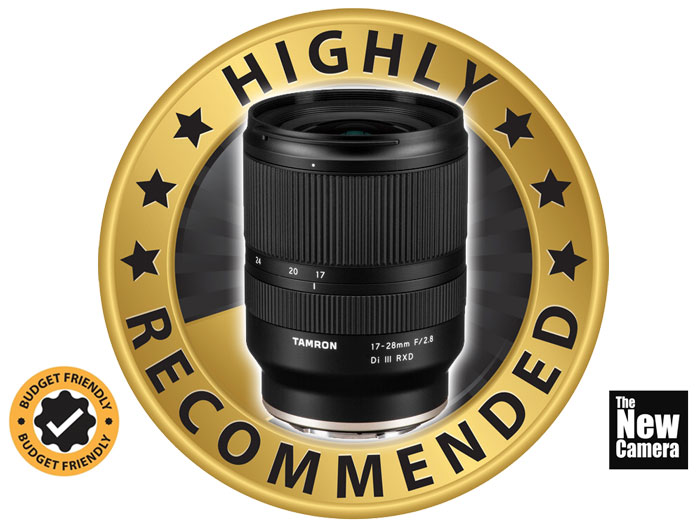
Get Tamron 17-28mm F2.8 lens from Amazon.com | B&H Store
6. Tamron 17-28mm F2.8 (Budget alternative)
Now, if you have a limited budget, then do not buy the 14-30mm F4 lens. The best alternative to that is the Tamron 70-28mm F2.8 lens. For Daily Life Vloggers/content creators, it’s highly recommended that they should buy this lens. Even for those who shoot indoors, like indoor architecture photography or corporate-style videos where sometimes u need a wide-angle zoom lens the best option will be the Tamron 17–28mm F2.8 RXD. Now, for those who shoot nature and landscape images or those who shoot outdoors architecture where light isn’t a big issue, AND if you are not able to buy the Nikon 14-24mm F2.8, then you can go with the 14-30mm F4 in that specific case.
Conclusion
| What we like |
What we don’t |
- Good Optics
- Good chromatic aberration control
- Silent AF
- Lightweight design
- Works well for video too
- Excellent price-to-performance ratio
|
- Abbreviated zoom range compared to competitors
- Pronounced barrel distortion at 17mm
|
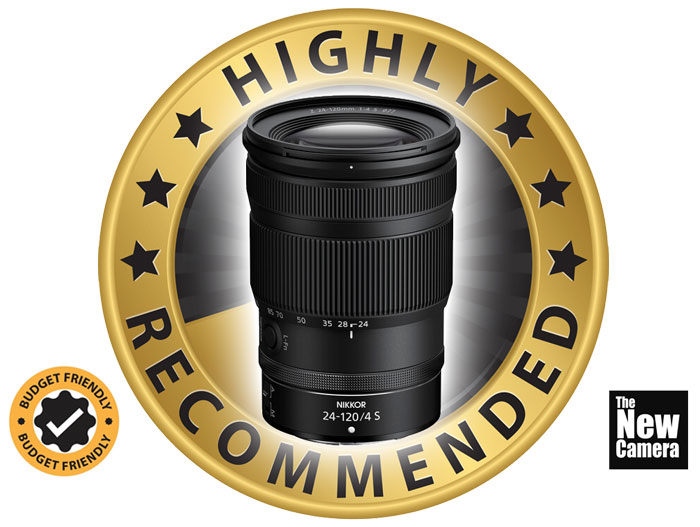
Get a Nikon 24-120mm Lens from Amazon.com | B&H Store
7. Nikon 24-120mm F4S Best Travel Zoom Lens
The Nikon 24-120mm F4 lens is a multipurpose zoom lens with a constant F4 aperture throughout the zoom range. It is highly recommended for daytime travelers or for those who want an all-rounder lens and mostly work in light, not in dark situations or at night time. This particular lens is highly usable as it covers a very broad range from 24-120mm and features an F4 aperture with a VR unit inside.
For those concerned about low light performance, or those who know they will be working mostly in uncontrolled light environments or they didn’t carry any professional lights with them all the time, in those very specific scenarios, it’s recommended to buy a bright aperture-based zoom lens if possible. For that, I would highly recommend the Tamron 28-75mm F2.8 lens. Otherwise, you may feel sometimes that the F4 aperture is blocking a lot of light, whereas an F2.8 lens will help you to capture a clear picture
Conclusion
| What we like |
What we don’t |
- Cover long range
- Constant F4 Aperture
- Hybrid STM AF Motor
- Lightweight design
|
|
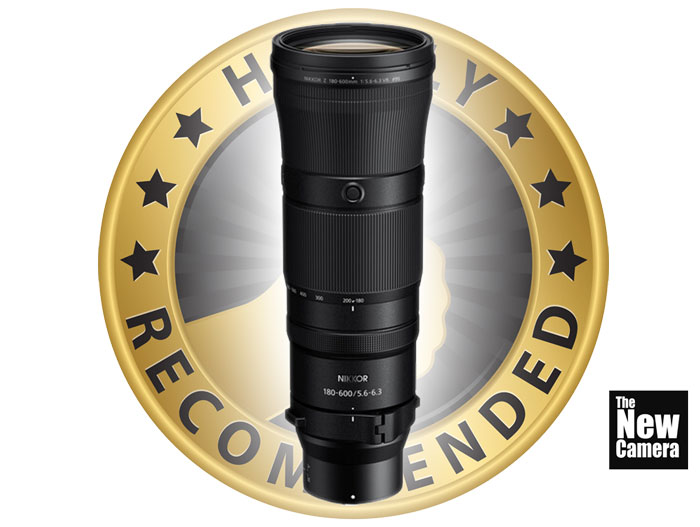
Get a Nikon 180-600mm Lens from Amazon.com | B&H Store
8. Best Wildlife and Sports – Nikon 180-600mm F5.6-6.3 VR
If you are interested in sports and wildlife photography and have a good budget, then I have a lens recommendation for you. The lens is the 180-600mm lens which covers a remarkable range. The lens construction is rock solid and weather-sealed, and it has different types of VR as well as programmable modes for its easy function during the shoot. The quality of optics used by Sigma Japan just amazing, capturing sharp images throughout the zoom range. When capturing at 600mm or 180mm, you will be surprised by the amount of detail present in the image, even when paired with a Z9 camera’s 45.7-megapixel sensor. The lens’s resolving capability is exceptional. This lens could be a great addition to your photography gear.
What users say about Nikon 180-600mm F5.6-6.3 VR
I finally got this lens that is replacing my Nikon 200-500 and, I have to say, it is superior in every way. It’s sharper, has interior movement, goes from 180 to 600 in a flick of the wrist, it’s water resistant and has a 4-button programmable ring. I use it on my Z9 camera-great combination. I could not be more pleased with it. It has noticeably upped my wildlife shooting game.
The Nikon Z 180-600mm f5.6-6.3 VR lens’s sharpness is phenomenal and delivers tack-sharp images across the full frame at all focal lengths. As I have said if budget allows this is the best lens you can buy for your Nikon Z6 III camera. The lens pairs beautifully with the Z TC-1.4x without any issues and boasts a speedy and dependable autofocus. The Lens handles color aberrations, coma, focus-breathing, and distortions with aplomb. Plus, it’s got effective optical image stabilization and produces a creamy bokeh. Weighing in at a relatively high 2kg and packed with features, this lens offers great value for its price. If you’re looking for a lens that delivers on performance, the Nikon Z 180-600mm f5.6-6.3 VR lens comes highly recommended!
Conclusion – 180-600mm Lens Highly Recommended for sports and wildlife shooters
| What we like |
What we don’t |
- Best Lens for Wildlife | Sports
- Cover up to 600mm
- Hybrid USM AF Motor
- Hybrid IS
- Dust Proof design
|
- Heavy approx 2kg, will need monopod support for smooth capture
|
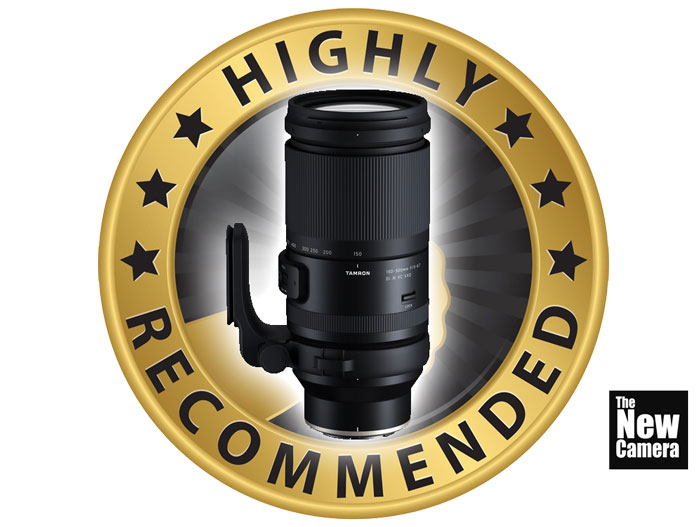
Get the Tamron 150-500mm Lens from Amazon.com | B&H Store
9. Tamron 150-500 F5-6.7 – Budget Alternative
See the budget alternative is only when you don’t have the budget to buy the 182600 MM lens. Otherwise, the 180 to 600 MM lens produces very sad images at the tele compared to 150 to 500 mm and the darkest part is Damron 150 to 500 mm has a slower aperture at 500 mm compared to the Nikon 182 800 MM lens whose maximum aperture goes up to 6
We recommend you to go with Nikon 180-600 mm and only if the budget does not allow then you go with the 150 to 500
Conclusion
- If you prioritize features and image quality and are willing to pay more for a longer reach and better low-light performance, the Nikon Z 180-600mm is the better choice.
- If you are on a budget and prefer a more compact and portable lens, the Tamron 150-500mm is a great option that still offers excellent image quality.
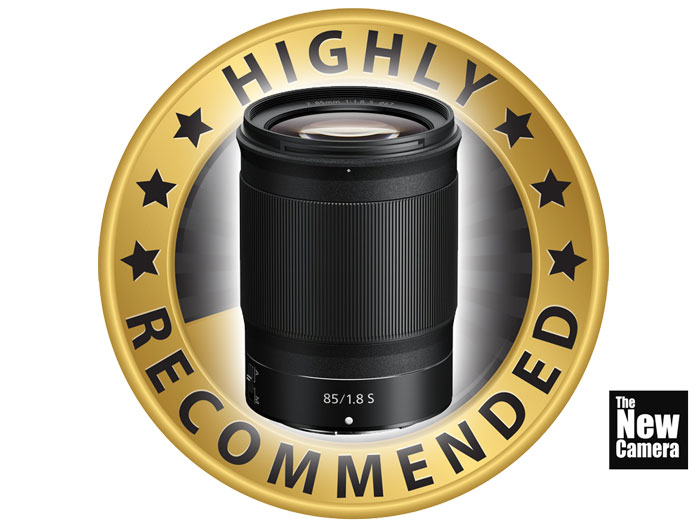
Get the Nikon Z 85mm F1.8 S Lens from Amazon.com | B&H Store
10. Nikon Z 85mm F1.8S
If you’re a professional portrait, fashion, or wedding photographer looking for the perfect portrait prime lens, then without a doubt, the 85mm F1.8 S is the best lens you can have for your Nikon Z camera.
This lens is a portrait lover’s dream. It’s highly recommended for portrait photography. Its wide f/1.8 aperture throws the background into dreamy softness, making your subject the star. Whether it’s a romantic candlelit dinner or a child’s infectious laughter, or ur capturing pre-wedding candids, capture those expressions with stunning detail and depth.
Low-Light Luminary: Don’t let darkness dim your creativity. The f/1.8 aperture gobbles up light, letting you shoot stunning photos in dimly lit cafes, concert halls, or even under the starry sky. Capture the mood, the emotion, and the beauty of those fleeting moments, even when the sun sets.
If your budget allows, you must have this lens for your Nikon Z camera. It’s the best portrait prime lens ever built by Nikon for its Z system mirrorless camera.
What users say about this lens
As I transitioned from DSLR (D850) to Z7 this lens replaced my 85 1.4G. Pleasantly surprised. Light, fast focus, and extremely sharp. Even if or when Nikon produces a 1.4 version, I wouldn’t upgrade.
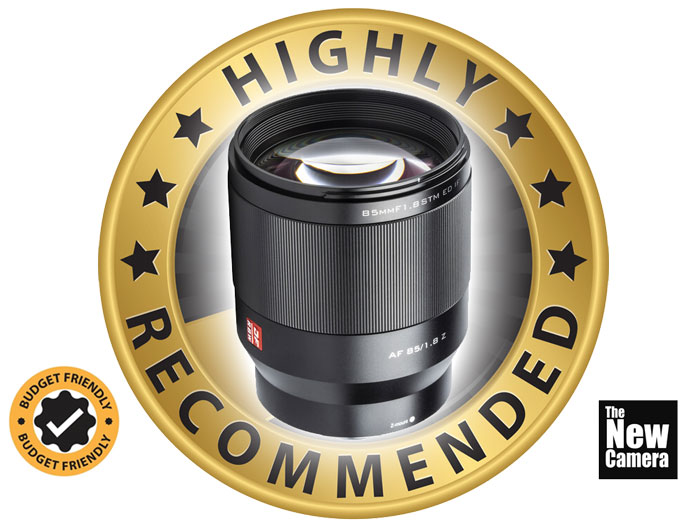
Get Viltrox 85mm F1.8 from Amazon.com | B&H Store
11. Viltrox 85mm F1.8: Budget alternative:
The construction is very solid, the focus ring is very comfortable and has a smooth action. The autofocus is very fast and silent. And the optical performance is excellent. Razor sharp at the center, even at maximum aperture. AF works perfectly. Eye AF works great no complaints. The focus ring is vary smooth. It came with the latest firmware installed. For the price, you can’t ask for anything more.
Nikon 85mm F1.8 OR Should you buy the more affordable Viltrox 85mm F1.8 Lens instead of Nikon 85mm F1.8, let’s find out
Conclusion
What we like Nikon 85mm F1.8
|
What we don’t |
- Superior build quality: Weather-sealed construction makes it ideal for harsh conditions.
- Superb bokeh: Creamy and smooth background blur for exceptional portraiture.
- More consistent autofocus: Highly reliable even in low-light situations.
|
- Higher price: Significantly more expensive than the Viltrox.
- Bulky and heavier: Not as comfortable for long outings or travel.
- Autofocus speed: Slightly slower than the Viltrox in some situations.
|
Budget alternative: Viltrox 85mm F1.8
Should you buy the more affordable Viltrox 85mm F1.8 Lens instead of the Nikon 85mm F1.8, let’s find out
| What we like |
What we don’t |
- Significantly cheaper: This is a major advantage for budget-conscious photographers.
- Compact and lightweight: Easier to carry around and travel with.
- Fast autofocus: Great for capturing fleeting moments and fast-moving subjects.
- Good image quality: Sharpness and color rendition are generally excellent, especially for the price.
|
- Build quality: Not as weather-sealed or robust as the Nikon.
- Bokeh: May not be as smooth or creamy as the Nikon at wider apertures.
- slow AF in low-light compared to Nikon
|
Which one is better?
Picture this: you’re staring down two magical wands, each promising to conjure up dreamy portraits and captivating close-ups. One wand sings a budget-friendly tune, while the other whispers promises of pro-grade performance. So, which one unleashes your inner photography wizard?
The Viltrox: This wand is for budget-conscious photographers and cinematographers. It’s lighter, easier to sling on your back, and won’t break the bank. Its autofocus is quick as a wink, capturing fleeting moments like a charm. Sure, it might get a little cranky sometimes in dim light, and its build isn’t quite as tough as a dragon’s scales, but the photos it conjures are sharp and stunning. Think of it as your sidekick for budget-friendly street stories and travel escapades.
The Nikon: This Lens is made for the perfectionist who craves control. It’s built like a fortress, ready to weather any storm and keep your focus razor-sharp even in the deepest shadows. Its bokeh (that’s the fancy word for blurry backgrounds) is like a creamy dream, making your subject the star of the show. But be warned, this wand demands a hefty investment. Think of it as your ultimate ally for crafting flawless portraits and capturing fleeting moments with professional precision.
7 Best Lenses for Nikon Z8 (…and 3 to avoid)
Nikon ZF vs Nikon Z6 Mark II – 12 Major Differences
By admin, on June 27th, 2024
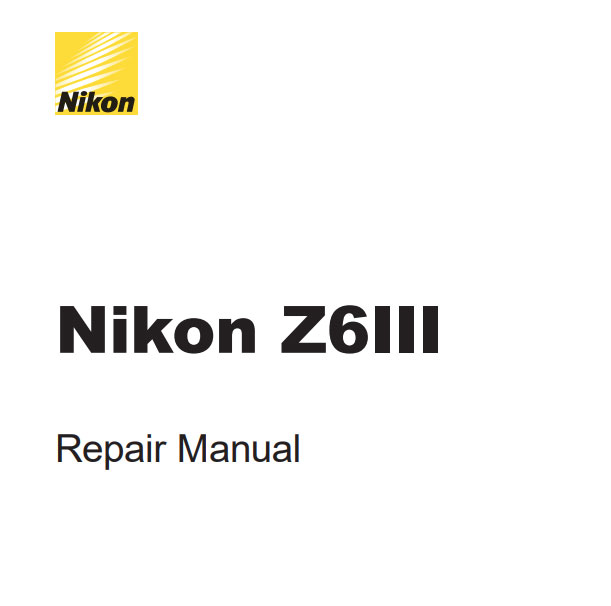
The good thing is that Nikon has added the Nikon Z6 Mark III camera repair manual to their self-repair web page. That’s great news since the Z6 Mark 3 is a recently announced camera. Nikon’s initiative means that all the details on how the camera can be repaired and the spare parts will be available to everyone. The only thing is that it is advised to do self-repair only if you are confident / already have a deep understanding of electronics and how it works or get fixed, or ask your nearest camera serviceman or expert to repair it once the warranty period is over.
The service or repair manual helps you and other camera servicemen and experts understand how this camera can be completely repaired. Another interesting part is that most of the parts will soon be available online and at the nearest Nikon stores, allowing for easy replacement if they get damaged.
Download Self repair PDF from here
Nikon Z6 III-related content
Nikon Z6 III Pre-Review | Features Explained | Press Release
Nikon Z6 III vs Sony A7 IV | In-Depth Analysis | Best Camera for Photographers
Nikon Z6 Mark III vs Nikon Zf
|
KEEP THIS BLOG ALIVE - Support New Camera Buy Canon Lenses, Buy Music CD or Digital Camera at amazon it helps this site, and you do not pay anything extra, it is just a way to help support this site.

|























